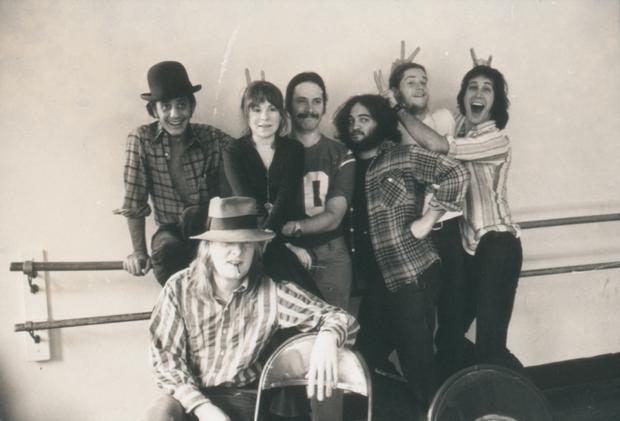When Malala Yousafzai took a bullet after standing up for the cause of girls’ education, she became a feminist hero. It seems a little odd, then, that a new documentary about the Pakistani teen is titled He Named Me Malala.
Just who is this “he,” and why is he sharing top billing?
Turns out he’s her father, and the meaning of the title soon becomes clear. In the first of several animated segments sprinkled throughout the film, we learn that Ziauddin Yousafzai named his daughter after a legendary Afghan woman who was killed in battle while encouraging her country’s troops to repel a foreign invader.
This raises a question that director Davis Guggenheim and his subjects address: Did Malala’s name predestine her to suffer for a heroic cause?
In case you’ve forgotten the details of Malala’s rise to international fame, she was shot by a Taliban gunman in 2012 because she’d spoken up against the group’s attempt to prevent girls from being educated. Though she miraculously survived, the wound left permanent damage to her face and hearing.
Despite her injuries, Malala has continued to be an advocate for girls’ education. However, she and her family were forced to relocate to the UK due to continuing death threats from the Taliban.
Documentarian Guggenheim is best known for An Inconvenient Truth (2006) and Waiting for Superman (2010). The former soars on the strength of Al Gore’s impassioned warning about the dangers of global warming, but the latter received mixed reviews for its one-sided critique of public education.
He Named Me Malala is another mixed success. The girl at its center is endearing and inspiring, and it’s fascinating to meet the father who apparently shares her brave commitment to gender equality. If only Guggenheim had relied on them to tell their own stories, the film would be a powerful experience.
Too often, he uses animation to fill in details and emotions that we’d rather hear from the father and daughter’s own lips. Created by Sean Buckelew and designed by Jason Carpenter, the animated images are lovely but distracting and distancing.
Sometimes, they come off as superfluous. After hearing how ruthless the Taliban had become—bombing schools and executing critics—we don’t need a cartoon to tell us that Malala feared the group would try to silence her by attacking her and her family.
The documentary fares the best when it keeps the flesh-and-blood version of Malala on the screen. Whether she’s giving an impassioned speech on the importance of education, ogling online images of handsome cricket players or worrying about keeping up her grades, she comes across as both a typical teen and an extraordinarily courageous human being.
Rating: 3½ stars (out of 4)
He Named Me Malala, rated PG-13, opens Friday (Oct. 9) in theaters nationwide.
The folks who gave us the magazine that gave us ‘SNL’
The recent documentary Live From New York! was an entertaining, if flawed, history of Saturday Night Live’s first 40 years. Now we have the chance to catch a film that could be seen as that documentary’s prequel.
Drunk Stoned Brilliant Dead: The Story of the National Lampoon recalls the 28-year history of the magazine that was, in many ways, SNL’s spiritual parent.
Founded in 1970 as a spinoff of the long-running Harvard Lampoon, National Lampoon specialized in vicious satire and parodies. By showing there was a market for anti-establishment humor, it helped to set the stage for the late-night NBC show that debuted in the fall of 1975.
Not only that, but Lampoon actually supplied the original cast for the show—unwillingly. When the magazine branched out into radio and stage shows, it hired comic actors who would soon be snapped up for SNL.
Directed by Douglas Tirola, Drunk Stoned Brilliant Dead earns its name by talking about the comic geniuses who helped to shape the magazine. Many were eccentric, hard-working and hard-partying individuals who burned out quickly, which helps to explain why National Lampoon’s most brilliant moments came during its first five years.
Of course, the magazine continued to hang around for decades and even spread its influence to Hollywood beginning with the debut of National Lampoon’s Animal House in 1978.
Because the documentary mostly deals with the life and death of a magazine rather than a TV show, Drunk Stoned Brilliant Dead can’t offer as much entertaining archival material as Live From New York! It partially makes up for this by interviewing Lampoon-related celebs such as Bill Murray, Chevy Chase and a slew of others, but it’s generally a drier affair than the SNL doc.
It’s also a bit of a downer. It leaves the impression that the magazine grew out of the kind of confluence of talent that is unlikely to ever be repeated.
Rating: 3 stars (out of 5)
Drunk Stoned Brilliant Dead opens Friday (Oct. 9) at the Gateway Film Center, 1550 N. High St., Columbus.
CUTLINE FOR MALALA:
Malala Yousafzai is the subject of the documentary He Named Me Malala
CUTLINE FOR DRUNK:
Garry Goodrow, Alice Peyton, Christopher Guest, John Belushi, Peter Elbling, Chevy Chase (from left) and Tony Hendra (front) in Drunk Stoned Brilliant Dead (photo by Michael Gold/courtesy of Magnolia Pictures)




